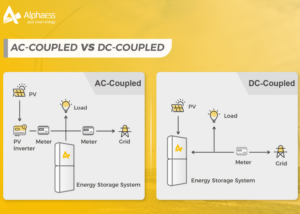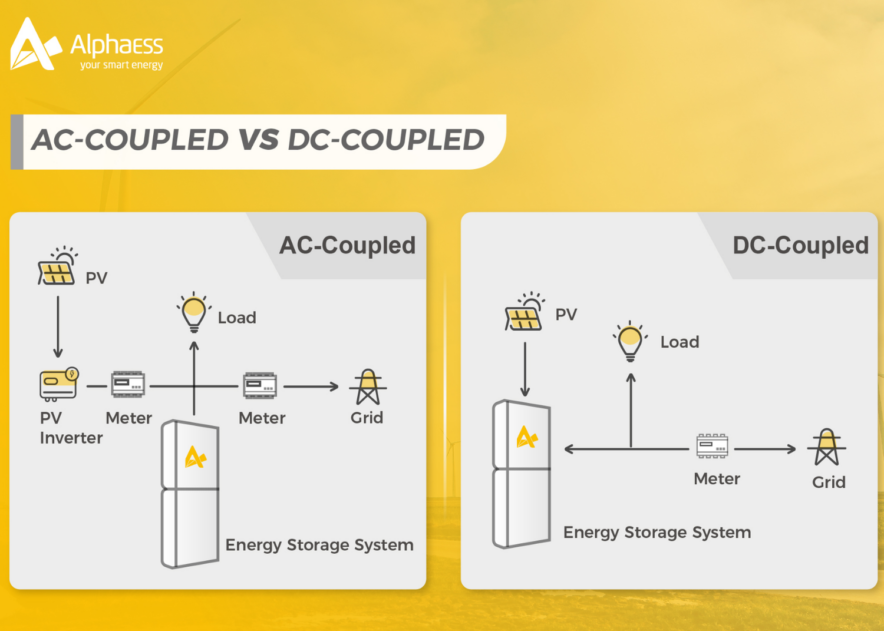Understanding Solar Terminology: AC-Coupled vs DC-Coupled
March 31, 2023
Have you been left in the dark with your solar? Were you promised you would have power when there was a power cut?
We hear this a lot from customers who got their solar installed with a non-hybrid inverter and then looked at adding a battery later on. They were told they could just add another battery and when there is a power cut you will have backup power. What they don’t explain is that you can only install an AC coupled battery when you have a non-hybrid inverter – yes it’s cheaper, however it could cost you more later on when you do want to add a battery or worse be left in the dark with NO battery back up.
How an AC coupled battery works
When the grid is available: the battery is charged from the grid or any excess solar generation from your system.
With excess solar, it makes its way through the switchboard and before it gets exported, the power will go into the battery. Once the battery is full, it will then continue to export any excess left. The battery will then provide power to your house loads before importing power from the grid.
When the grid goes down: the battery will provide power to your house using the amount of energy stored in the battery at the time of the grid failure.
If your battery is low or near empty, you will have very little power available until the grid is restored. Your existing non-hybrid solar inverter/s will shut down as the battery is not directly connected to the solar and will not turn on until the grid returns.
How a DC battery works
Unlike an AC battery, a DC battery is only connected to essential power circuits in the house you choose. For example, lights in certain rooms, a fridge/freezer, a WIFI modem and a few power points.
When the grid is available: the battery is designed to be charged from any excess solar generation from your system. It can also be set up to charge from the grid.
With excess solar, it makes its way through the hybrid inverter which will charge the battery before exporting it to the grid. Once the battery is full, it will then export any excess solar back to the grid & your retail power company will credit your power account for it.
Most hybrid inverters have the option to allow the battery to be charged from the grid for a defined time period. If this setting has been enabled, the grid will charge the battery until it is full or the time period expires.
When the grid goes down & there is no solar generation (evening, poor conditions): the battery will provide power to the chosen power circuits in your home, using the amount of energy stored in the battery at the time of the grid failure.
When the grid goes down & solar power is generating: the solar panels & hybrid solar inverter will only provide power to the chosen power circuits in your home and charge the DC battery with any excess solar generated for your use at a later time.
It’s a common misconception that a hybrid solar system will be fully operational in the event of a power cut. For safety reasons on the power lines (to allow for linesmen to repair lines etc.), a hybrid solar system operates like an off grid system during a power cut and disconnects completely from the grid until the power is restored.
Our recommendation
Future proof your solar system and choose a hybrid ready solar inverter from the start. This will allow you the future option of adding a DC battery & backup power in the event of a power cut.
If you need any help or want more information, give us a call on 0800 203 204.

Get in touch with us to help with your solar panel needs.

